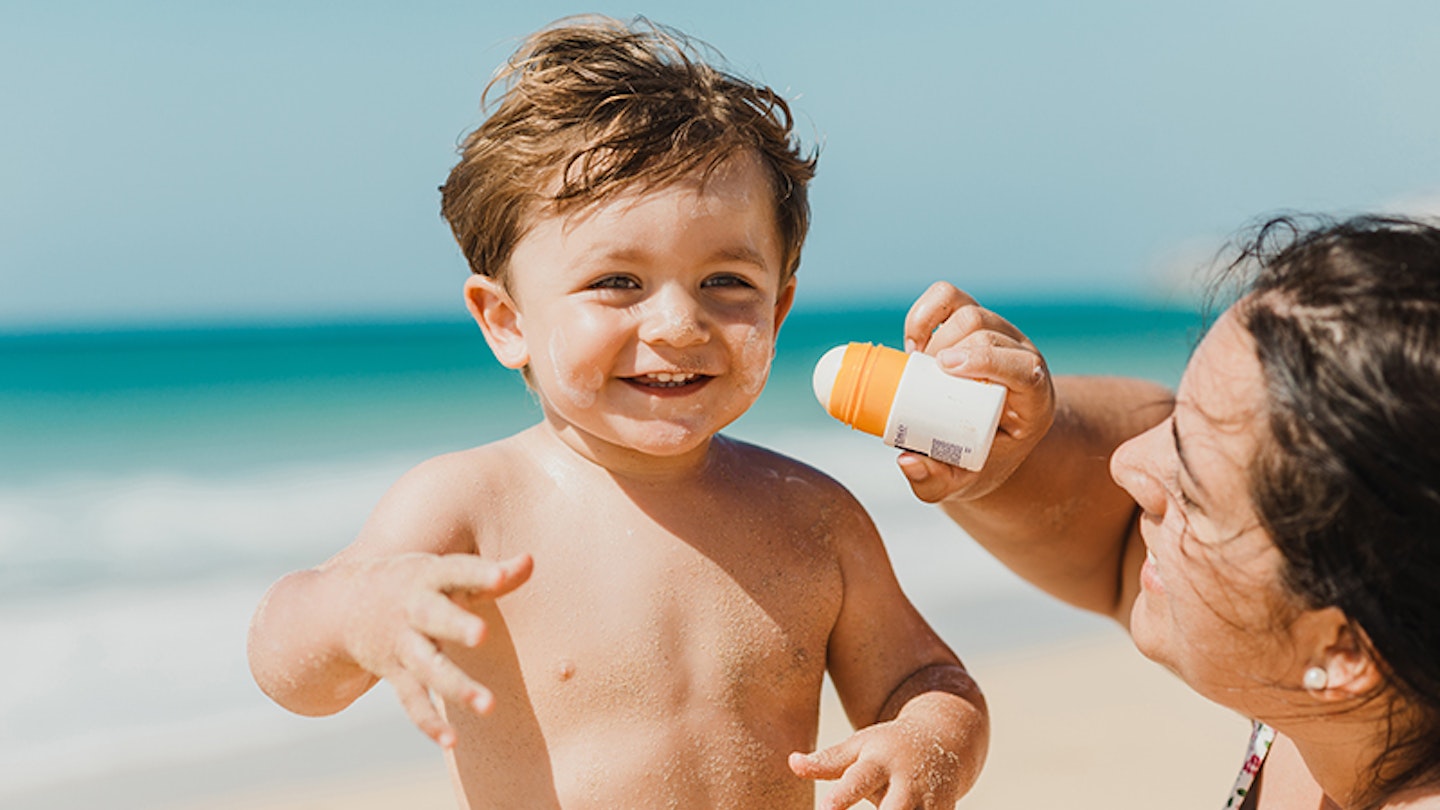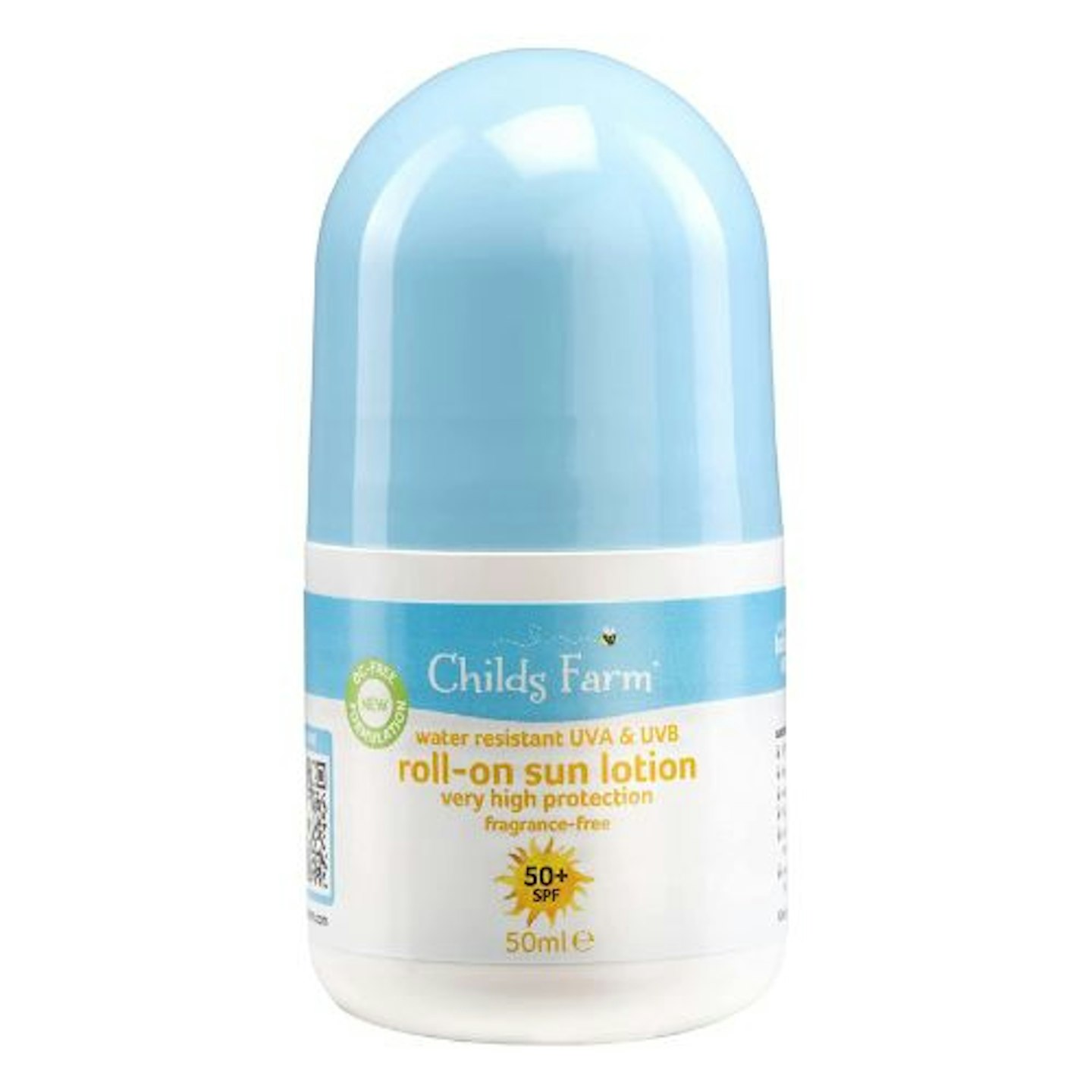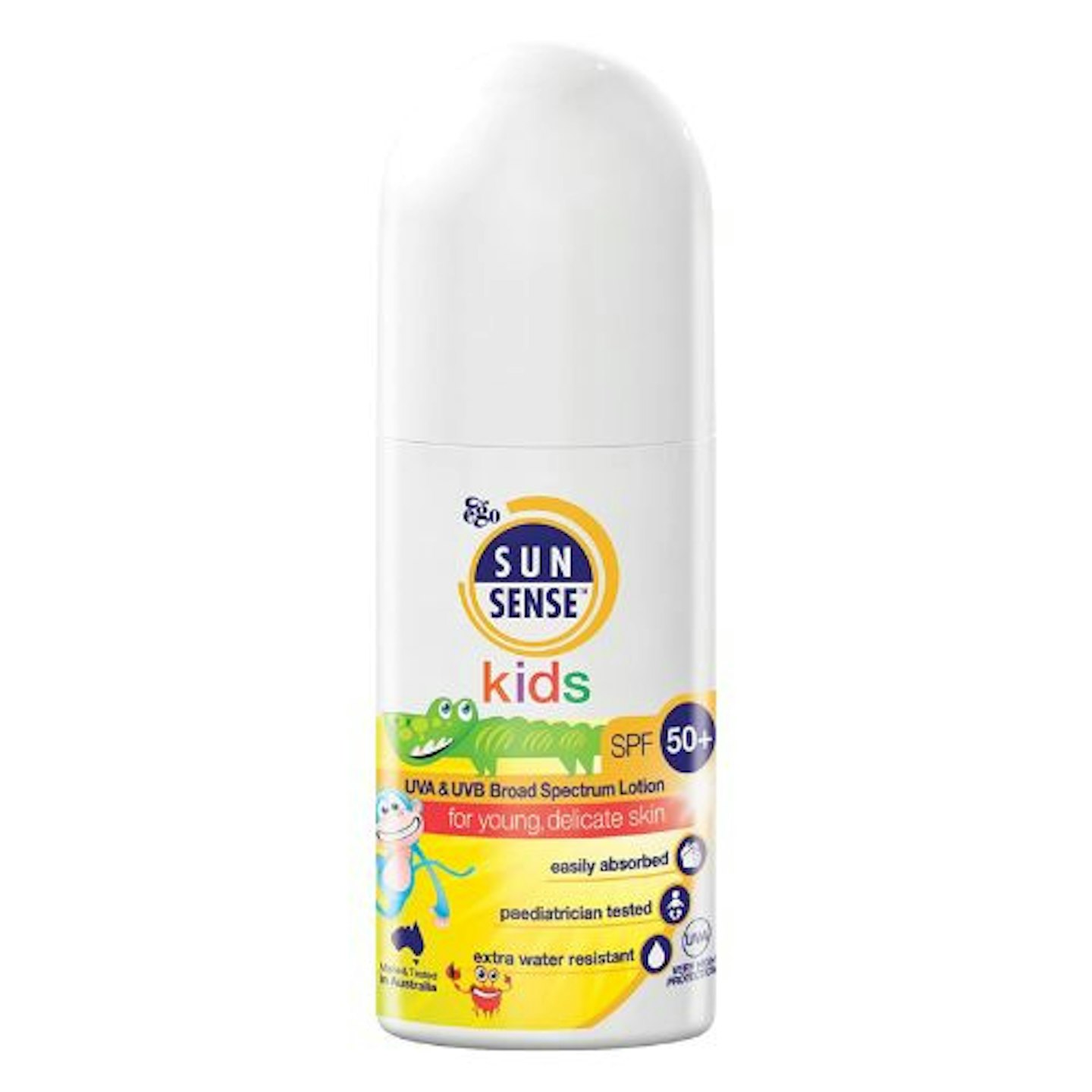If you're on the lookout for the best baby sunscreen, kids sunscreen sticks will be a lifesaver this summer. Easy to pop in your beach bag or holiday suitcase and quick to apply, they give the peace of mind that your little one's delicate skin is sun safe. Perfect for wriggly toddlers, or kids who'd like the independence of doing it themselves, a sunscreen stick means you can keep them protected from the sun.
Keeping your little one topped up with sunscreen and then some aftersun is incredibly important (as it is for parents too). It's recommended to apply sunscreen well before children head outside, making sure they're wearing a sunhat and staying hydrated too. Reapplying throughout the day is key to preventing sun damage to their delicate skin too. Sunscreen sticks will make that task simple and a lot less time consuming.
A kids sunscreen stick will be formulated with children's sensitive skin in mind, combining protection with skin-loving ingredients. Many sticks are even waterproof sunscreens for kids too. You'll want a formula that has a high SPF, doesn't feel sticky, and absorbs quickly so they can get back to playing in the sun as soon as possible - if it doesn't smell, even better!
Editor's Choice
• Best kids sunscreen stick overall: Childs Farm Kids and Baby Sun Lotion Roll-On - Buy now on Amazon UK
• Best kids sunscreen stick for sensitive skin: NIVEA SUN® Kids Caring Roll-On - Buy now on Boots.com
• Best water-resistant kids sunscreen stick: Soltan Kids Protect & Moisturise Suncare Roll On - Buy now on Boots.com
• Best sunscreen stick for you and them: Aloha Sun Stick - Buy now on Amazon UK
If you're looking for an easy way to apply sun protection to your little one's skin, take a look at our full list of the best kids sunscreen sticks down below - then go have some protected fun in the sun!
The best kids sunscreen sticks
Best kids sunscreen stick overall
The gentle Childs Farm Kids and Baby Sun Lotion Roll-On was carefully formulated for children's sensitive skin, with the sunscreen drying nicely into the skin in no time at all. With high protection and easy application, you can't really go wrong this pick, plus it can even be used one children who have eczema, making it suitable for all skin types.
One reviewer said: "I tried different lotions and moisturisers to keep my baby’s skin moisturised but none of the products worked until I used this lotion! I can see my baby’s skin is getting better after using it for a few days! Great product!"
Pros
- Kind to the skin and planet
- High protection
Cons
- Some reviewers felt it was a little greasy
| SPF: | 50 |
| Protection: | UVA and UVB |
| Water-resistant? | Yes |
Best kids sunscreen stick for sensitive skin
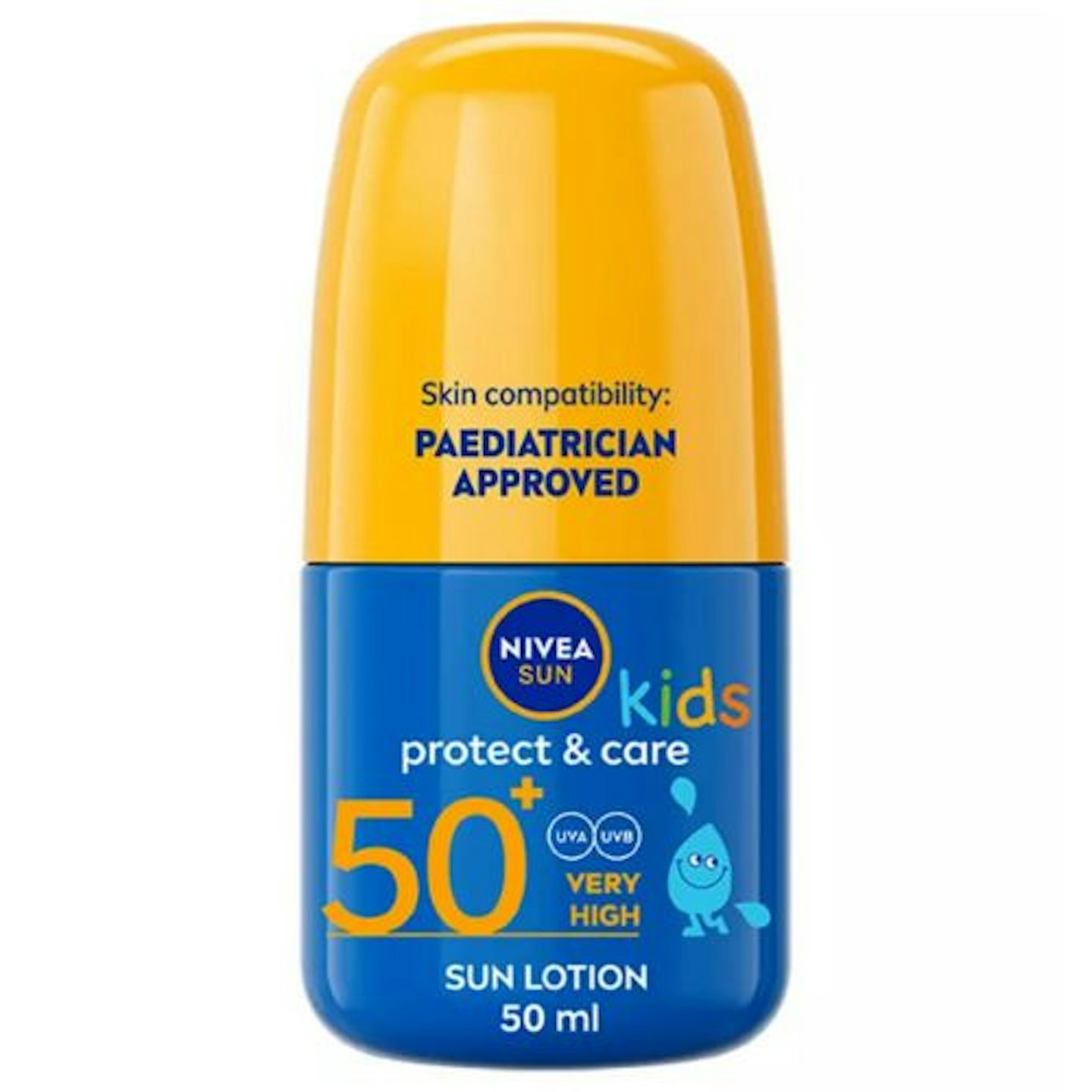
www.boots.com
With a formula that moisturises as it protects, we NIVEA SUN® Kids Caring Roll-On is definitely a winner for parents. This lightweight roll-on takes care of their skin when they're exposed to the sun while also reducing the risk of sun allergies, perfect for going on holiday or when the UK Summer finally hits.
One reviewer said: "I love this product. For my children I always choose factor fifty. I particularly love the fact it starts to work immediately and is Cancer Research approved. I’ve tested it on my kids skin, as expected with any Nivea product there’s been no reactions and it goes on lovely. I’m definitely confident this product will keep my children safe on holiday."
Pros
- Extra water-resistant
- Moisturising
Cons
- Not the best for babies
| SPF: | 50+ |
| Protection: | UVA/UVB |
| Water-resistant? | Yes |
Best kids sunscreen stick for moisturisation
Combining SPF 50+ and Vitamin B3, this formula can protect your child's skin from when they're 6 months old. The SunSense Kids SPF50 + Children's Sunscreen is fab for dry skin, as it's incredibly hydrating while absorbing into the skin nicely. Reapply every four hours and your little one will be good to go.
One reviewer said: "My little boy has really bad Eczema and all other brads brought him out in a bad flare up but this one is honestly amazing was no flare up, definitely recommend!!"
Pros
- Contains moisturising Vitamin B3
- Gentle formula
Cons
- One reviewer found the packaging hard to open
| SPF: | 50+ |
| Protection: | UVA and UVB broad spectrum protection |
| Water-resistant? | For 4 hours |
Best water-resistant kids sunscreen stick
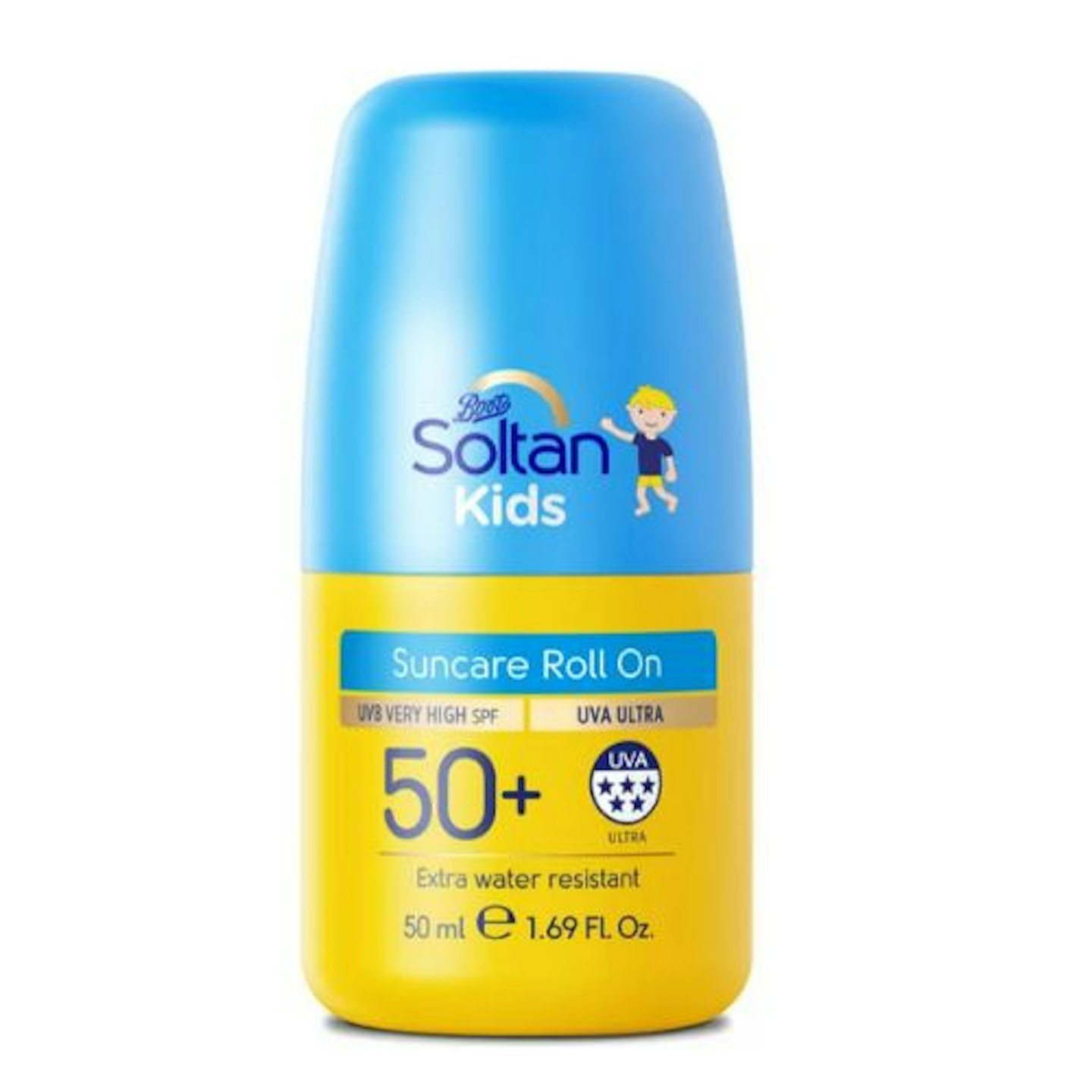
www.boots.com
The Soltan Kids Protect & Moisturise Suncare Roll On is incredibly easy to apply, so if your little one wriggles around when your putting sunscreen on them, this will get the job done a lot faster. It's also super water-resistant, so if your kids love running into the ocean, they'll still be protected. Soltan is also the Official Sun Safety Partner of Macmillan Cancer Support to give you some extra reassurance.
One reviewer said: "Great product, bought to use in Dubai, never burnt! Easy for kids to use, safer on the face, less chance of getting in their eyes and they spent most of the time in the pool too!"
Pros
- Rubs in easily
- Formulated for delicate skin
Cons
- Slightly runnier than other options
| SPF: | 50+ |
| Protection: | Maximum 5 star UVA protection |
| Water-resistant? | Yes |
Best kids sunscreen stick for application
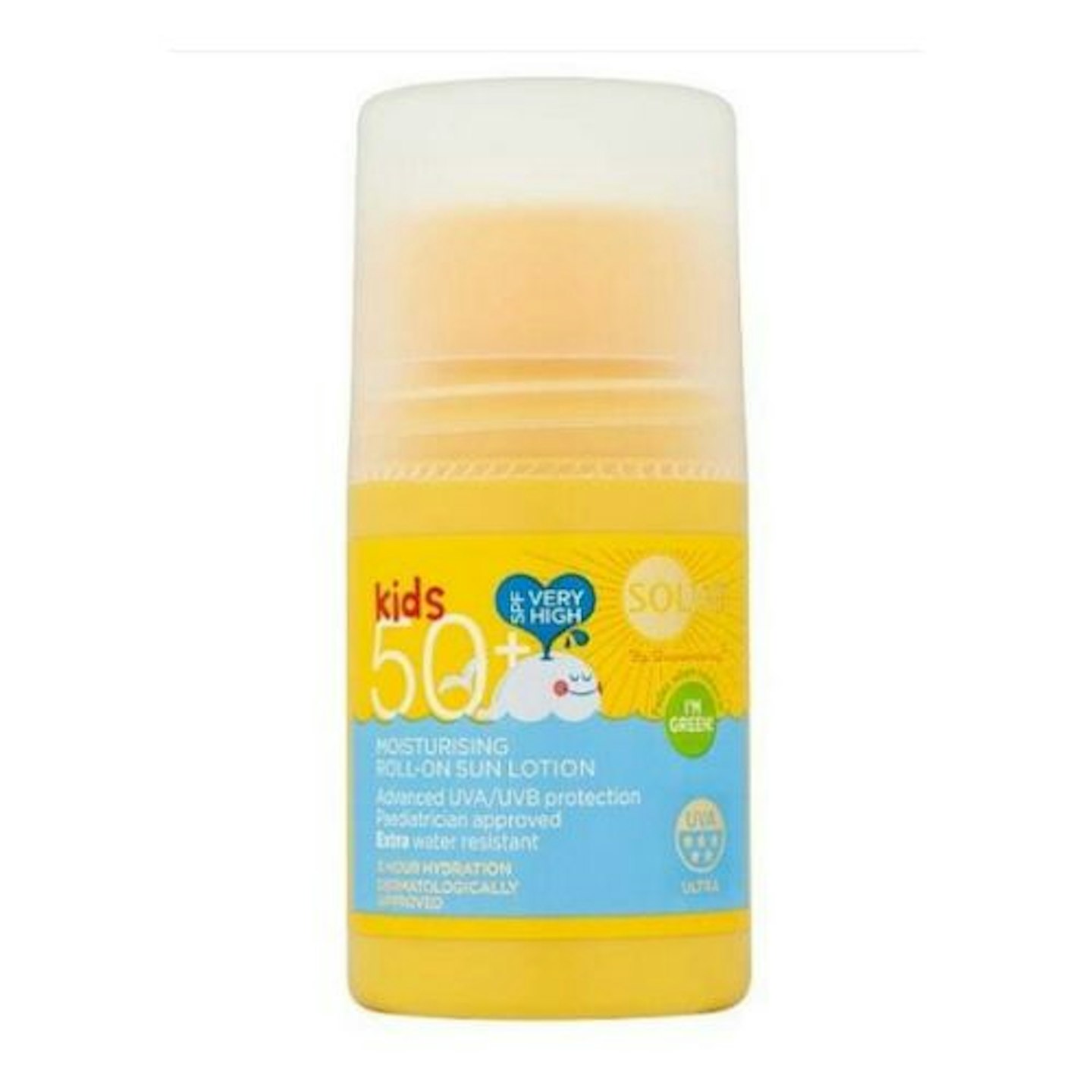
www.superdrug.com
Not only is the Solait Kids Roll-on Sun Cream super protective and easy to apply onto a fidgety child, it's paediatrician approved too. Affordable and highly effective, this sunscreen roll-on stick will keep your child's skin protected as they enjoy the warmer weather that we so rarely get in the UK.
One reviewer said: "Great protection and my grandaughters love the roller application and putting it on by themselves, with a little help of course."
Pros
- Dermatologically approved
- 24 hour hydration
Cons
- One reviewer claimed that their bottle leaked
| SPF: | 50+ |
| Protection: | UVA and UVB |
| Water-resistant? | Yes |
Best value kids sunscreen stick

www.sainsburys.co.uk
What we love about the Sun Protect Kids Roll-On Sun Lotion is that it's formulated with Vitamin E. This means it's soothing and moisturising while offer sun protection. This is another affordable option that is perfect to pop in your bag for long days out or have older children reapply for themselves.
Pros
- Soothing formula
- Amazing price
Cons
- No reviews yet
| SPF: | 50+ |
| Protection: | UVA (5 star rating) and UVB |
| Water-resistant? | No |
Best kids sunscreen stick packaging
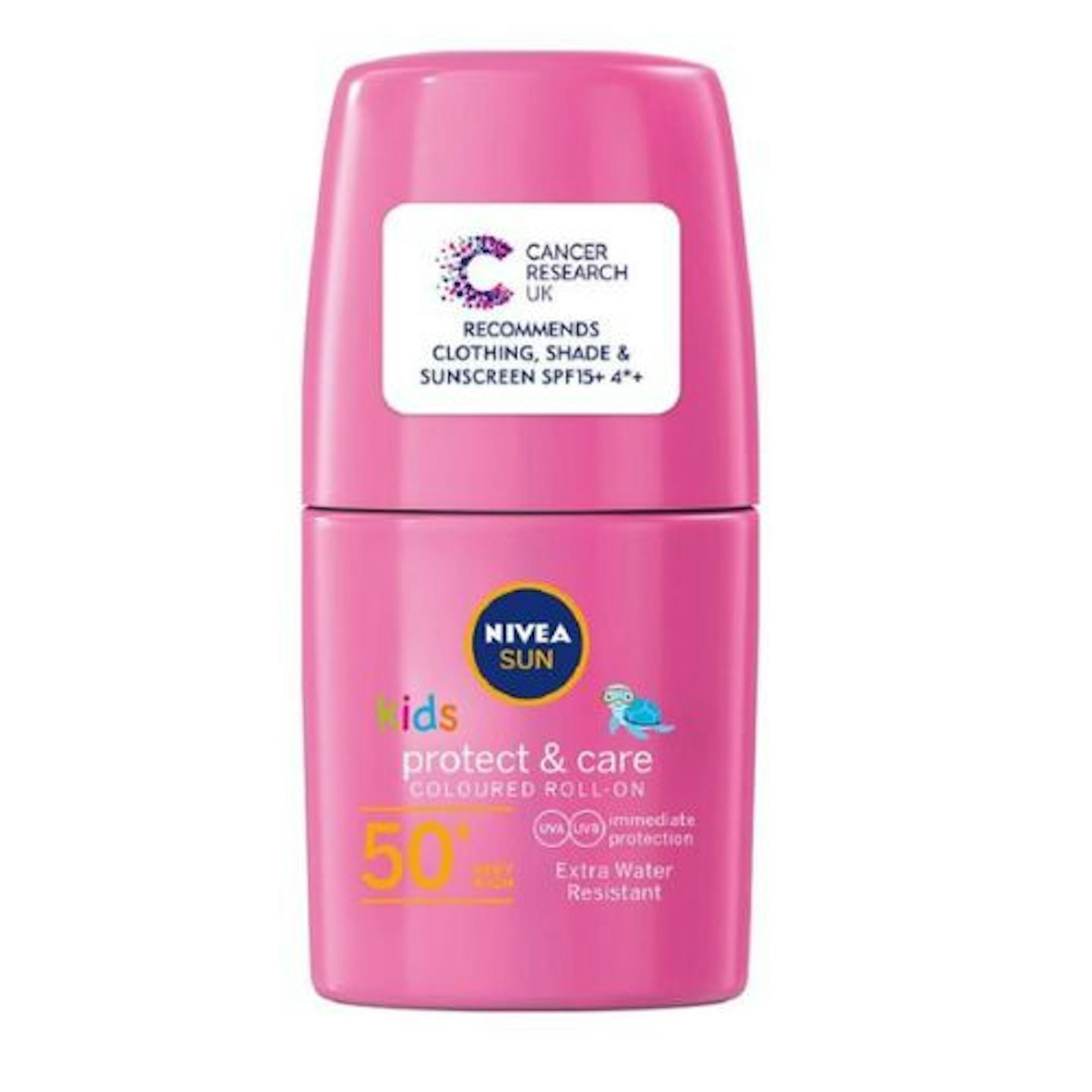
www.ocado.com
This is the same NIVEA SUN Kids Protect & Care formula that parents love with a special, fun and pink twist. Along with the effective 5-in-1 skin protection, this formula comes in vivid pink packaging as it is in collaboration with Cancer Research UK. We love this design and message, plus the fact you can put their clothes back on straight after application.
One reviewer said: "Sinks into the skin well without being greasy. Doesn’t stain clothing like others."
Pros
- Extra water-resistant
- Caring formula
Cons
- A smaller stick
| SPF: | 50+ |
| Protection: | UVA/UVB |
| Water-resistant? | Yes |
Best sunscreen stick for you and them
For mineral-enriched protection for your skin and your little one's skin, this is a winning pick. Long-lasting and natural, we love that this is a zero-waste product, making it better for the environment. The stick itself has a soft texture so it glides on smoothly, and you can get it in different colours for an added bit of fun.
One reviewer said: "I used on my lips and nose as they usually burn first. This is the best sun block I have found. I would totally recommend."
Pros
- Formula contains castor and raspberry seed oil, candellila and carnauba wax, plus Vitamin E
- Plastic-free packaging
Cons
- Better for older children
| SPF: | 50+ |
| Protection: | UVA and UVB |
| Water-resistant? | Yes |
Is a kids sunscreen stick better than other sunscreen options?
As long as your child is protected from UV rays while out in the sun, any form of sunscreen that works for you is best. The reason why many parents prefer stick and roll-on formulas, is because they make applying the formula evenly onto children a lot easier, plus older children can even put it on themselves with minimal effort.
Sunscreen sticks are also a lot easier to throw in in your bag as they take up less space. The formulas tend to be not as runny as others as well, which makes the likelihood of wasting product minimal, which is a win-win in our books.
What to consider when choosing a sunscreen stick for your child?
• Is it formulated for their age group?
• Will it fit in your bag for the day?
• Is it a SPF 50+ formula?
• What does the formula consist of?
• Does it fit into your budget?
• Does it protect from UVA and UVB rays?
Where should you apply sunscreen on your child?
Our golden rule for applying sunscreen of any kind is make sure everywhere that isn't covered by clothing is covered by sunscreen, adding extra to parts that are really exposed like the nose and shoulders. Clothing isn't always protective enough either, so we'd recommend applying sunscreen to the majority of their body. This should protect your baby from the sun too, but check with their doctor just in case.
How often should you apply sunscreen on your child?
The NHS suggests that you applying is at least 30 minutes before they head out and then just before they go out in the sun for a proper level of protection. So two applications before they're exposed to UV rays.
They also state that "Sunscreen needs to be reapplied liberally and frequently, and according to the manufacturer's instructions."
"This includes applying it straight after you have been in water, even if it's "water resistant", and after towel drying, sweating or when it may have rubbed off."
"It's also recommended to reapply sunscreen every 2 hours, as the sun can dry it off your skin."
What is the right SPF for children?
Because kids have really sensitive skin, we'd suggest playing it safe and getting them at least factor 50 sunscreen. You'll notice that the majority of the kids sunscreen sticks above are SPF 50+, because that's the best for a child's skin in the sun.
How else can you keep your child safe from the sun's UV rays?
Kids can be a little awkward with sun protection, and we get it, they just want to get out there and have fun as soon as possible. But there are a couple of easy ways to keep them protected. As well as applying sunscreen, clothing that covers them (within reason for warm temperatures) and sun hats can offer some additional protection.
Try to make sure they have regular breaks from the sun throughout the day and keep them in the shade frequently too. This is obviously, but keeping them hydrated in warmer weather is also very important.
UVA vs UVB
You may be wondering what the difference between UVA and UVB rays are. UVA (ultraviolet A) rays have a longer wavelength which means they're more likely to cause skin aging. UVB (ultraviolet B) rays are shorter and are what causes the skin to burn. They're both dangerous so, you'll need protection from both of them.
Eve Miller is a Commercial Content Writer for Mother&Baby, working for Bauer Media for over two years. She is passionate about beauty, creative writing, and women’s healthcare.
